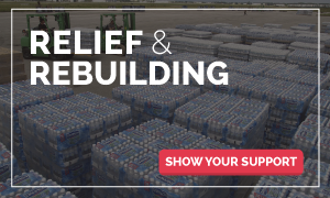In the aftermath of Hurricanes Harvey and Irma, analysts are estimating an economic impact of roughly $290 billion. Estimates are varied and the full extent of damage will depend on a number of factors.
Prior to the storms, the U.S. economy was doing well, with economists estimating GDP growth near 3 percent, almost a point above the trend. But if the damage estimate is accurate, it has the potential to slow the US GDP growth by up to 0.8 percent this quarter.
 In a statement on September 20th, Fed Chair Janet Yellen noted that third quarter economic growth would slow due to the hurricanes, but “these effects are unlikely to materially alter the course of the national economy beyond the next couple of quarters.”
In a statement on September 20th, Fed Chair Janet Yellen noted that third quarter economic growth would slow due to the hurricanes, but “these effects are unlikely to materially alter the course of the national economy beyond the next couple of quarters.”
So, let’s take a closer look at some of the economic trickle-down effects that we might see in the coming months.
Material and Labor Costs
Shortages on materials like lumber, combined with a surge in usage in order to rebuild parts of Texas and Florida will lead to national price increases for those goods. Increased demand in devastated areas coupled with a U.S. tariff on Canadian lumber, and we’ll likely see significantly higher costs for wood.
There will also be an increased demand for construction labor in affected areas, something that will likely exacerbate the country’s construction labor shortage.
Additionally, gasoline prices have jumped due to hampered and shut down oil refineries along southeastern Texas and Louisiana. Just this past week, U.S. crude oil increased to just over $50 a barrel as some of the largest refineries in the United States work to get back online.
Uptick in Inflation Rates
The previously noted rise in gasoline, lumber, and other material costs are expected to cause an uptick in inflation rates. August saw consumer inflation rise at its fastest pace since spring, with year on year inflation hitting 1.9 percent, up from 1.7 percent in July.
And where those inflation rates sit could determine where interest rates go. On September 20th, the Federal Reserve announced it would leave the interest rate at its current 1 percent, but indicated plans for another hike before the end of the year. While rising inflation rates may be temporary, if they’re not, will that give the Fed pause on raising interest rates in December?
Shifts in Consumer Spending
Along with impacting interest rates, the uptick in inflation rates will alter consumer spending in the coming months. Costs of gasoline and other retail items impacted by the aftermath of the hurricanes will put a dent in consumers wallets.
As noted by Ryan Sweet, director of real-time economics at Moody’s Analytics, every penny increase in gasoline prices reduces consumer spending by $1 billion over the course of the year.
And the squeeze on disposable spending may shift holiday outlooks for many retailers and economists.
|
Help Texas and Florida RebuildThe economic impacts of Hurricanes Harvey and Irma may impact Americans in the short-term, but the personal impacts on those directly affected will be felt for years to come. Organizations are on the ground helping victims, and it’s never too late to help these communities rebuild.
|








